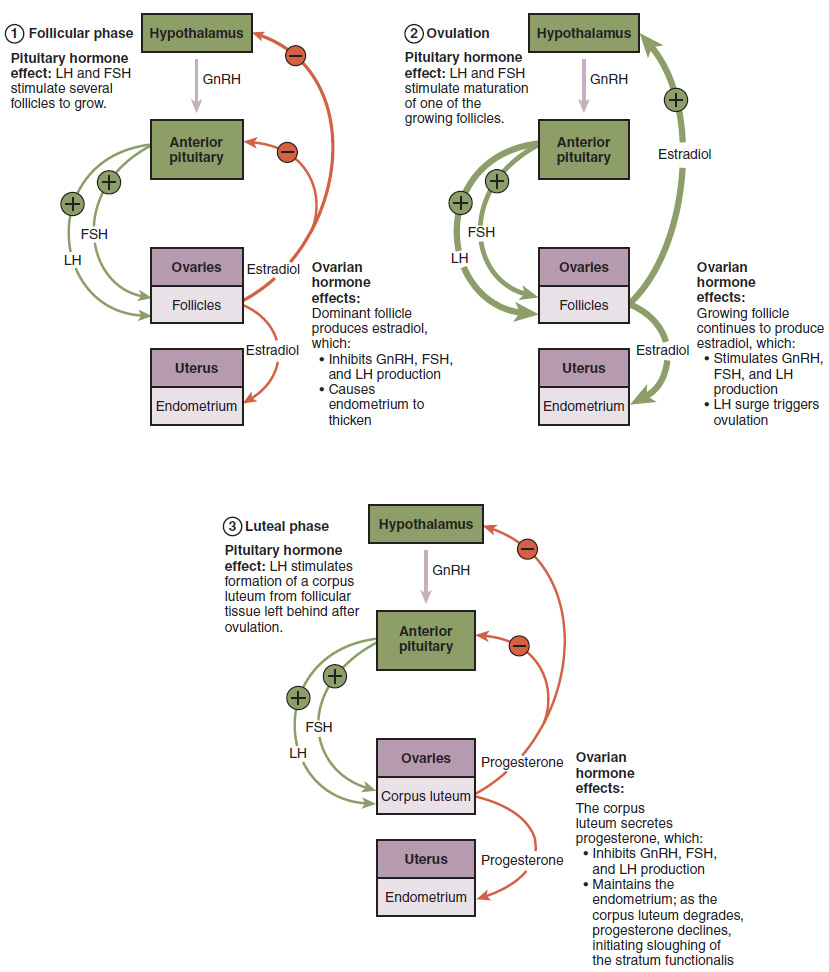| << Chapter < Page | Chapter >> Page > |
After puberty, a few primordial follicles will start to develop each day. These developing follicles are called primary follicles . Changes to the cells of the folliclesPrimary follicles start with a single layer of granulosa cells, but the granulosa cells then become active and transition from a flat or squamous shape to a rounded, cuboidal shape as they increase in size and proliferate. As the granulosa cells divide, the follicles—now called secondary follicles (see [link] )—increase in diameter, adding a new outer layer of connective tissue, blood vessels, and theca cells —cells that work with the granulosa cells to produce estrogens.
The process of development ends with ovulation of a secondary oocyte. The process occurs over a course of approximately 28 days. These changes are regulated by many of the same hormones that regulate the male reproductive system, including GnRH, LH, and FSH.
As in men, the hypothalamus produces GnRH (Gonadotropin Releasing Hormone), a hormone that signals the anterior pituitary gland to produce the gonadotropins FSH (follicle stimulating hormone) and LH (luteinizing hormone) ( [link] ). These hormones leave the pituitary and travel through the bloodstream to the ovaries, where they bind to receptors on the cells of the follicles. FSH stimulates the follicles to grow (hence its name of follicle-stimulating hormone). The release of LH also stimulates cells of the follicles to produce the sex steroid hormone estradiol, a type of estrogen . This phase of the ovarian cycle, when the follicles are growing and secreting estrogen, is known as the follicular phase .
The more cells a follicle has (that is, the larger and more developed it is), the more estrogen it will produce in response to LH stimulation. As a result of these large follicles producing large amounts of estrogen, blood levels of estrogen concentrations increase. The high concentrations of estrogen will stimulate the hypothalamus and pituitary to reduce the production of GnRH, LH, and FSH. Because the large follicles require FSH to grow and survive at this point, this decline in FSH leads most of them to die. Typically, only one follicle will survive this reduction in FSH and is known as the dominant follicle . This follicle will be the one that releases an oocyte (egg).


Notification Switch
Would you like to follow the 'Mrs browne's reproductive modules' conversation and receive update notifications?